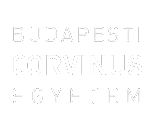Besgül, Bora (2017) Comparative approach to education policies towards minorities in the example of Sweden and Hungary. MA/MSc szakdolgozat, BCE Közgazdaságtudományi Kar, Közgazdálkodás és Közpolitika Tanszék.
|
PDF
- Requires a PDF viewer such as GSview, Xpdf or Adobe Acrobat Reader
1MB |
Absztrakt (kivonat)
The Research aims to clarify the Hungarian and Swedish interventions to their respective educational structures in the issue of the minority education in order to close the educational gap between majority-minority groups. Finding the main structural differences in the educational systems of Sweden and Hungary towards their most disadvantaged, segregated, discriminated minority groups are important in order to determine the drawbacks and pitfalls of Hungary because Sweden portrays a good example in this regard. The focused groups are the Sami in Sweden and the Roma in Hungary which groups resemble each other since they had been segregated and discriminated by their majority groups during the history. While Sweden tries to solve its Sami integration problem with the special Sami-only schools as well as Sami integrated schools, Hungary only uses the integrated school structure which seems like a failed intervention due to the high number of early school-leaving rates among Roma students according to the recent OECD Education Outlook Report for Hungary (2015). Research concentrates if the Sami education policy of the Sweden (use of the minority language in education, special schools only for minority groups, special legal status, and rights) can apply to the Roma people in Hungary or they both are incompatible due to their very unique characteristics (sense of belonging to the country, legal status). The study attempts to use the comparative research methodology. Therefore, the Swedish interventions are compared with Hungarian educational context in the terms of educational structures, economic situations, and individual expectations. National perspectives (ministry announcements, legal documents), international analyses, rankings, critics were applied to the comparison. The final results of the research indicate that some Swedish interventions can adapt to the Hungarian minority education (Sami Schools, minority language education) but either Sami or Roma have very different characteristics and they make this adoption very difficult in reality.
| Tétel típus: | MA/MSc szakdolgozat |
|---|---|
| Témakör: | Társadalombiztosítás, szociálpolitika, egészségügy Oktatás Szociológia Pedagógia |
| Azonosító kód: | 9766 |
| Képzés/szak: | Public Policy and Management |
| Elhelyezés dátuma: | 20 Szept 2017 06:39 |
| Utolsó változtatás: | 02 Dec 2021 11:12 |
Csak a repozitórium munkatársainak: tétel módosító lap



